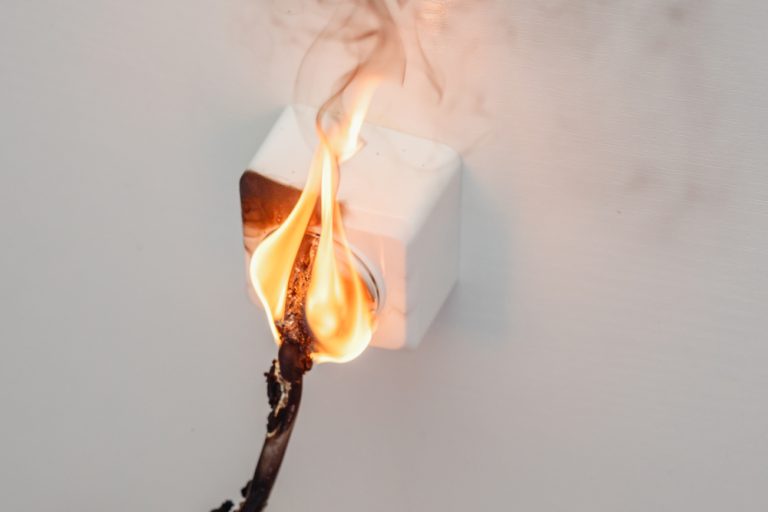Today, ever-rising global temperatures and the rising number of wildfires have become too often. So fireproofing your house has become more important than ever. Even a small cane fence can ignite an uncontrollable fire in your yard or home. Another liability is the dry wood of your deck, stairs, and beams on your home. The truth is that the construction can’t ever be completely fireproof. The best way to additionally fireproof all the wooden structures and have a piece of mind is with fireproof wood treatment.
You must ensure that everything exposed to the sun and heat is fireproof.
You also have to hold to some rules to help prevent a fire around your house.
1. Keep your deck and roof clean
Burning embers and small flames are the primary causes of homes and other structures igniting during a wildfire. Embers are flying pieces of burning wood or vegetation that can travel more than a mile. If these embers fall on your house, they pose a high risk of igniting.
If your roof was built with wooden shingles, you can fireproof them or install a rooftop sprinkler system.
Maintain and inspect the roof regularly. Embers can enter through any rooftop opening and repair or replace broken, loose, or missing shingles, tiles, or cracks. In addition, clean your roof, deck, and gutters to remove flammable materials like dead leaves, pine needles, and other debris.
2. Keep your eaves and vents clean
Prevent embers from entering and burning your home from the inside out. Screen and seal vents and other openings, and box in open eaves. If you have a pet door, ensure it has a good seal and keeps it shut during the fire season.
Radiant heat can melt plastic skylights and crack or burst glass in windows and doors, allowing embers to enter your home. Install tempered glass windows with double panes to withstand higher temperatures. Ensure that all windows have screens.
3. Create Zone 3 Defensible Space Around your House
Your defensible space encompasses your home and everything within a 100-foot radius. Radiant heat from up to 100 feet away can ignite your home, and nearby combustible material can act as a conduit for flames to reach your home. If you live in a wildfire-prone area, only protecting the 5 feet around your home puts you at serious risk.
When creating a secure perimeter around your home, consider the three zones. When applying this information, keep in mind that the degree of slope may cause an increase in the recommended distances.
There are three zones: Zone 1 – 0 to 5 feet, Zone 2 – 5 to 30 feet, and Zone 3 – 30 to 100 feet. Be sure to remove all dead plants from all three zones and not plant any plants in Zone 1. Zones 2 and 3 are allowed bushes and flowers in clusters and low trees. This way, the plants are easier to extinguish if set on fire.
4. Plan in advance in the case of emergency
Ensure that street names and numbers are legible and marked. Driveways should be wide and clear. They must allow fire trucks and other emergency vehicles access to your home.
Creating a defensible space around your home helps firefighters defend your home from wildfires. Remember that they are only trained to protect structures that follow the rules for protection against fires.
Sometimes firefighters cannot protect your home during a wildfire. So having a defensible space increases the likelihood that your home will survive. Of course, there are no guarantees in life, but it always pays to be proactive and strive for the best possible outcome.
If you are in a wildfire zone, you should have ironed out an insurance policy and understand what you should do after a fire occurs. Being proactive, planning, and understanding the legal aspects of wildfires can help you navigate the insurance and recovery process if your property is affected by a fire. Review your homeowner’s insurance policy first, and ensure you know the wildfire coverage provisions. Next, grasp the benefits of hiring a wildfire attorney.
If your property is destroyed by a wildfire, having a lawyer knowledgeable on wildfire law may assist you through the insurance claims process. An attorney will help you understand your rights and obligations as a property owner if you need to file a wildfire lawsuit. They may also assist you in comprehending the rules and legislation on establishing a perimeter around your house.
5. Organize and coordinate with other people in your area
Organizing with people in your area allows you to identify and mitigate risks as a group before disaster strikes. Programs are available to help people improve the fire resistance of their homes and communities. For example, NFPA organized a Prep Day to raise community awareness of wildfire risk. They educate and assist homeowners and residents in improving the survival of their homes and neighborhoods.
Better safe than sorry
Wildfires are hard to control and put out; they are a force to reckon with. It takes only minutes for a spark to evolve into a wildfire, so be sure it never comes to a spark in the first place. A little preparation goes a long way.

